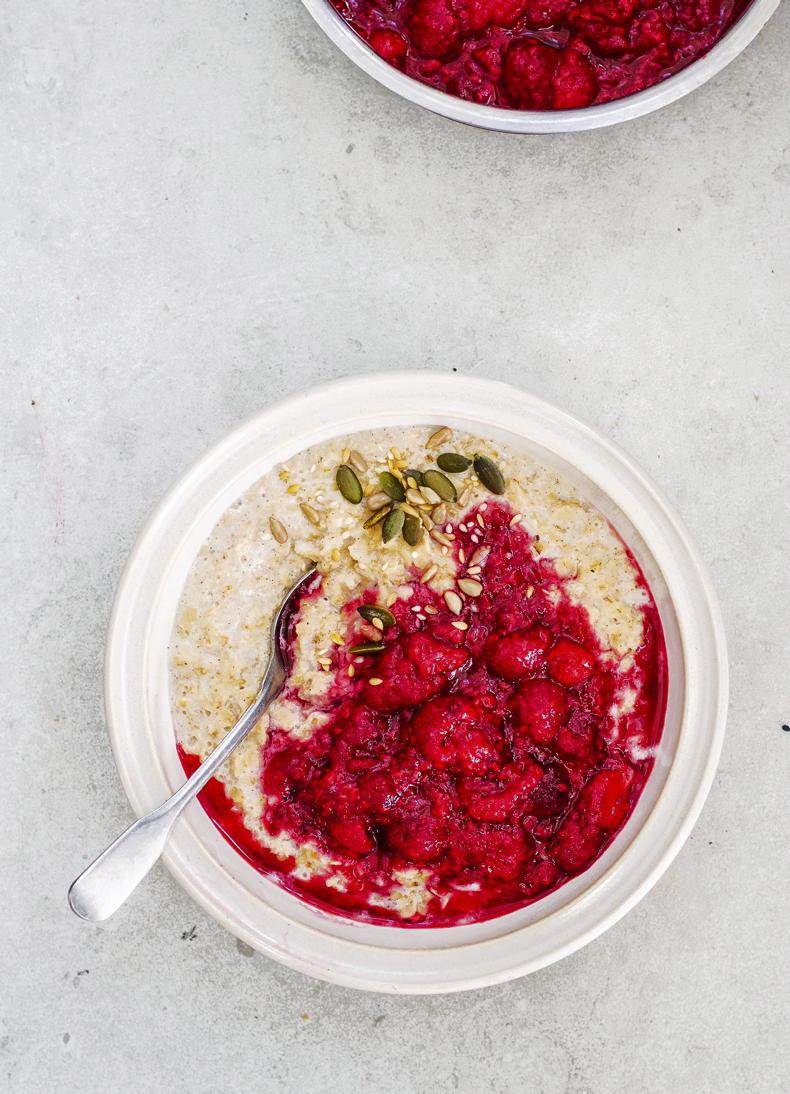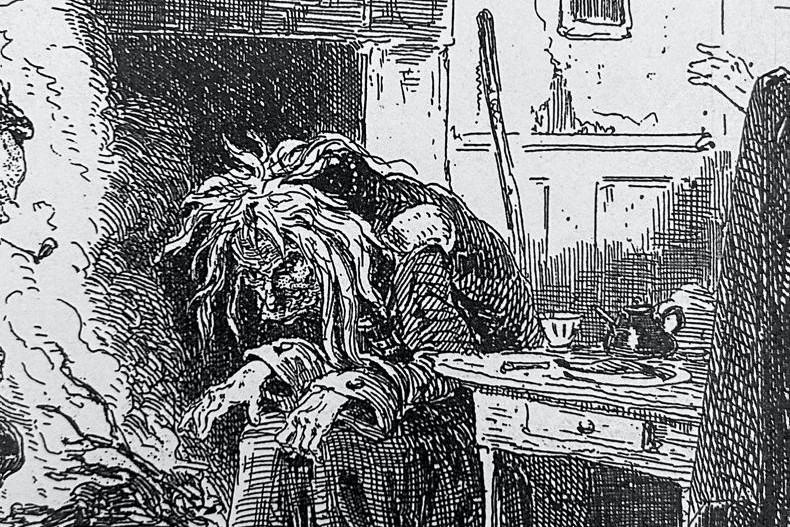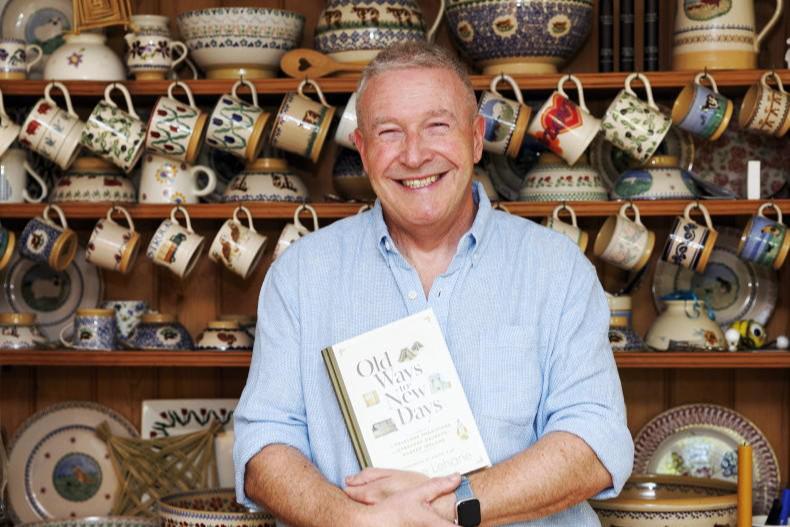We are in the dark and cold segment of the year. It is the time of the candle, the time of the warming fire and the time to stay inside and comfort ourselves in any way we can.
Getting out of the bed to the solace of an anticipated treat comes in the unlikely form, a heated glutinous, wet paste of a cereal grain – porridge.
A simple unassuming dish that is not only a treat, but a core tool to assist in our survival over the season. What outsiders might regard as an unsophisticated tasteless slop, is in fact a preparation of great culinary antiquity and sophistication.
The history
We know that oaten porridge was most likely an everyday item in the Irish diet since the introduction of oats in the Bronze Age period, some 4,500 years ago. Not only is there archaeological evidence of the charred cereal grains themselves, but importantly, there are many examples of the all-important saddle querns and rubbing stones that were used to grind the grain and reveal its essential starchy goodness.
In the Iron Age period that followed, the technology greatly improved with the introduction of the small, domestic, revolving dome-shaped ‘beehive’ querns, whose decorated top stone was rotated by hand using a small wooden handle placed in an external groove. The cereal was fed into a funnel-shaped hollow at its centre and the rotating stone crushed and broke the grains into the perfect consistency.
The Brehon Law, Cáin Íarraith (the law of fosterage fee), indicates that littiu (stirabout or porridge) was a staple to be given to children in the care of their foster parents. Depending on your status, porridge was prepared in different ways – oaten grain with water for the lower grades, while wheaten grain made with new milk and flavoured with honey was prepared for the sons and daughters of the king.
Special treat
Equally, the Céili Dé (the fanatical monastic community of early medieval Ireland), looked to porridge with a spoon of honey as a regular special treat. Interestingly, the late 11th century text, eulogising Irish food, the Aislinge meic Conglinne, picks out porridge as the smoothest and sweetest of all foods.
Present porridge
In later times, despite the presence of industrial mills, many persevered in grinding their oats domestically as needed, using a small rotary ‘pot quern’. This was considered women’s work. The store of thrashed and winnowed oats was secured in a wooden meal chest in the kitchen and the woman of the house would ensure the year’s supply would be carefully measured out.
In addition to porridge and oatcakes, the hand-ground, pin-head oatmeal was an essential ingredient at the time of pig-killing for bulking out the black and white puddings.
In some parts of Ireland, when the oats were still on the sheaf, the quickest method of winnowing them was to thrust them for a few moments into a loiscreán (blazing fire) to burn off the husk. The rich distinctive taste afforded to the oatmeal by this process may be one of the reasons why the slow toasting of oats before grinding is the distinguishing feature of the oatmeal produced by Donal Creedon in Macroom, Co Cork. In the family-owned mill, going back five or six generations, the chaff off the oats was used to fire the kilns to roast and shell the oats.
Nowadays, Donal oversees the slow roasting on special large, heated tables over two days and therefore, when ground by the large stone querns, the texture, taste and quality is unique. This is the oatmeal of the past with the modern millers steaming and rolling the oats to make flaked oatlets, which are softer and quicker to cook, catering to the convenience of our hectic lives.
Perfect porridge
Any porridge is better than no porridge and while I remain an active consumer and positive advocate of all porridge, this toasted, stone-ground oatmeal is a taste of a bygone age. I generally do not have the wit nor the time to prepare the authentic and traditional old-fashioned porridge the night before, but if you do, the rewards are unbeatable.

Flavahans raspberry coulis porridge.
Porridge is made at a ratio of one cup of oatmeal to four and a half or five cups of water. Bring the water to the boil and add the oatmeal slowly, stirring to avoid any lumps and once it is back at the boil, add a little salt to taste. Then turn off the heat, put the lid on the pot, and leave it until the morning. It is now only necessary to heat the soft mass of porridge, adding a little more water or milk, if you wish, and stirring it until soft and smooth. The soft little exploding volcanos of air on the surface of the porridge as it heats is onomatopoeically captured in a nearly forgotten Irish verb ag plobarnach (plubbering).
There is nothing more comforting on the cold mornings when you can see your own breath than a bowl of steaming plubbering porridge.
In terms of a sweetener, a popular addition is soft brown sugar, while I would be an advocate for some fine, quality wild Irish honey from your local beekeeper. We all have a personal favourite so whats your preferred topping on one of Ireland’s great traditional dishes?
Read more
Folklore: Barnbracks, charms and risqué blindfolding
Folklore: the wondrous blackberry
We are in the dark and cold segment of the year. It is the time of the candle, the time of the warming fire and the time to stay inside and comfort ourselves in any way we can.
Getting out of the bed to the solace of an anticipated treat comes in the unlikely form, a heated glutinous, wet paste of a cereal grain – porridge.
A simple unassuming dish that is not only a treat, but a core tool to assist in our survival over the season. What outsiders might regard as an unsophisticated tasteless slop, is in fact a preparation of great culinary antiquity and sophistication.
The history
We know that oaten porridge was most likely an everyday item in the Irish diet since the introduction of oats in the Bronze Age period, some 4,500 years ago. Not only is there archaeological evidence of the charred cereal grains themselves, but importantly, there are many examples of the all-important saddle querns and rubbing stones that were used to grind the grain and reveal its essential starchy goodness.
In the Iron Age period that followed, the technology greatly improved with the introduction of the small, domestic, revolving dome-shaped ‘beehive’ querns, whose decorated top stone was rotated by hand using a small wooden handle placed in an external groove. The cereal was fed into a funnel-shaped hollow at its centre and the rotating stone crushed and broke the grains into the perfect consistency.
The Brehon Law, Cáin Íarraith (the law of fosterage fee), indicates that littiu (stirabout or porridge) was a staple to be given to children in the care of their foster parents. Depending on your status, porridge was prepared in different ways – oaten grain with water for the lower grades, while wheaten grain made with new milk and flavoured with honey was prepared for the sons and daughters of the king.
Special treat
Equally, the Céili Dé (the fanatical monastic community of early medieval Ireland), looked to porridge with a spoon of honey as a regular special treat. Interestingly, the late 11th century text, eulogising Irish food, the Aislinge meic Conglinne, picks out porridge as the smoothest and sweetest of all foods.
Present porridge
In later times, despite the presence of industrial mills, many persevered in grinding their oats domestically as needed, using a small rotary ‘pot quern’. This was considered women’s work. The store of thrashed and winnowed oats was secured in a wooden meal chest in the kitchen and the woman of the house would ensure the year’s supply would be carefully measured out.
In addition to porridge and oatcakes, the hand-ground, pin-head oatmeal was an essential ingredient at the time of pig-killing for bulking out the black and white puddings.
In some parts of Ireland, when the oats were still on the sheaf, the quickest method of winnowing them was to thrust them for a few moments into a loiscreán (blazing fire) to burn off the husk. The rich distinctive taste afforded to the oatmeal by this process may be one of the reasons why the slow toasting of oats before grinding is the distinguishing feature of the oatmeal produced by Donal Creedon in Macroom, Co Cork. In the family-owned mill, going back five or six generations, the chaff off the oats was used to fire the kilns to roast and shell the oats.
Nowadays, Donal oversees the slow roasting on special large, heated tables over two days and therefore, when ground by the large stone querns, the texture, taste and quality is unique. This is the oatmeal of the past with the modern millers steaming and rolling the oats to make flaked oatlets, which are softer and quicker to cook, catering to the convenience of our hectic lives.
Perfect porridge
Any porridge is better than no porridge and while I remain an active consumer and positive advocate of all porridge, this toasted, stone-ground oatmeal is a taste of a bygone age. I generally do not have the wit nor the time to prepare the authentic and traditional old-fashioned porridge the night before, but if you do, the rewards are unbeatable.

Flavahans raspberry coulis porridge.
Porridge is made at a ratio of one cup of oatmeal to four and a half or five cups of water. Bring the water to the boil and add the oatmeal slowly, stirring to avoid any lumps and once it is back at the boil, add a little salt to taste. Then turn off the heat, put the lid on the pot, and leave it until the morning. It is now only necessary to heat the soft mass of porridge, adding a little more water or milk, if you wish, and stirring it until soft and smooth. The soft little exploding volcanos of air on the surface of the porridge as it heats is onomatopoeically captured in a nearly forgotten Irish verb ag plobarnach (plubbering).
There is nothing more comforting on the cold mornings when you can see your own breath than a bowl of steaming plubbering porridge.
In terms of a sweetener, a popular addition is soft brown sugar, while I would be an advocate for some fine, quality wild Irish honey from your local beekeeper. We all have a personal favourite so whats your preferred topping on one of Ireland’s great traditional dishes?
Read more
Folklore: Barnbracks, charms and risqué blindfolding
Folklore: the wondrous blackberry










SHARING OPTIONS